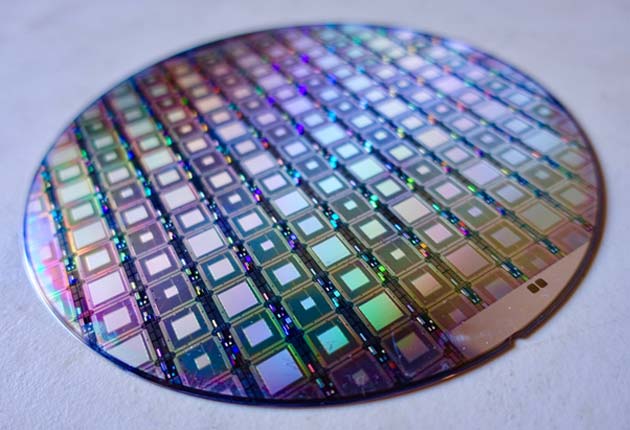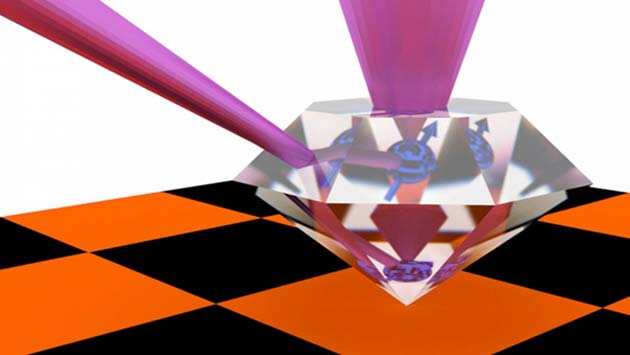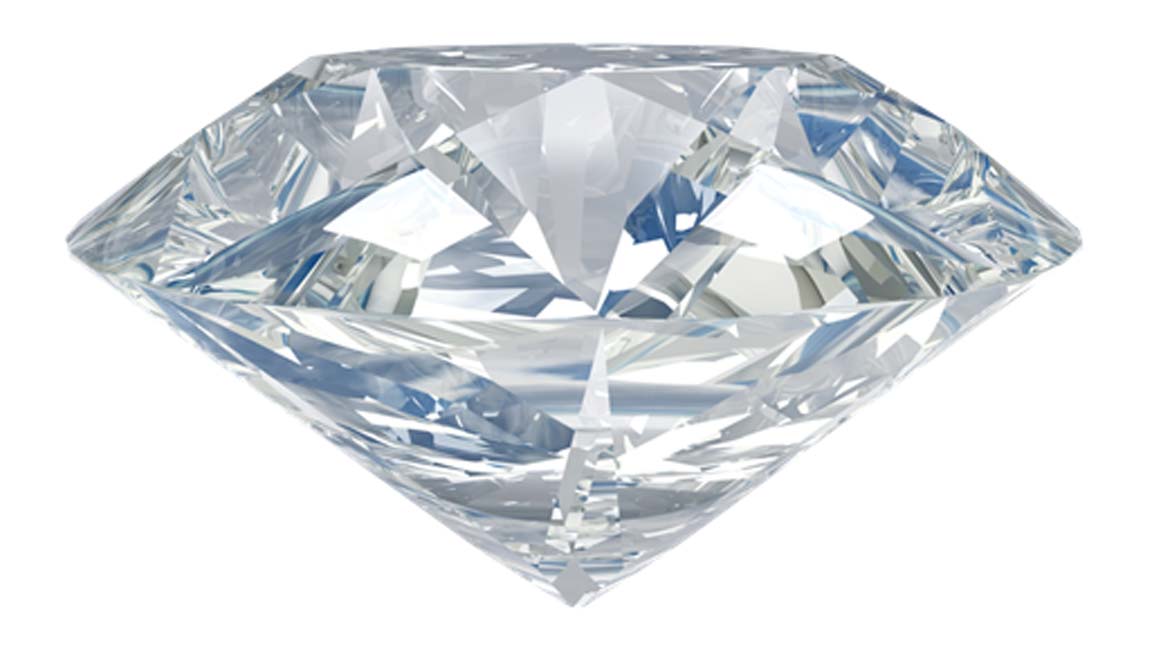It seems that diamonds grown in a lab will have many roles to play in the electronics and engineering of the future. This could be because these precious stones contain (necessary) defects, often worked into the diamonds to order.
The defects are created when a non-carbon atom takes the place of a carbon atom in the orderly molecular lattice that normally makes a diamond. Nitrogen vacancies (NVs), for example, have drawn some attention due to their potential in diagnostics, and their ability to emit red light when green light hits them, which has potential analytical value.
NVs have recently demonstrated the ability to assess the flow of electrons across tiny strips of graphene with great accuracy and sensitivity. This may be important, particularly if graphene realizes its promise as the superconductor of the future.
Diamonds in Quantum Computing
Diamonds with vacancies could be used to transmit or store data at the quantum level. In other words, they could be used as repeaters across networks between computers, all of which would be…quantum in nature.
Unfortunately, NVs have relatively poor optical qualities, meaning that their applications may be limited. For example, nitrogen vacancies may degrade the quality or integrity of quantum data over distance. This is a shame, as NVs also have long lifespans.
Therefore, a team of scientists at Princeton (in collaboration with others from the Gemological Institute of America in New York and the UK company, Element Six) decided to investigate the potential of alternative vacancy types in the transfer and storage of quantum bits (or qubits).
Previous work indicated that silicon vacancies (SiVs) significantly improved optical properties compared to NVs. However, SiVs also have a charge (namely 2+), which may impact their interactions with protons and electrons that are necessary for quantum data-transmission. More specifically, the charged vacancies, from past research, showed that SiVs did not hold coherence among the phonons (represent ‘noise’ in a quantum data system) for the required lengths of time.

This quantum-capable wafer may be only so useful without the ability to network with other quantum processors. (Source: Steve Jurvetson @ flickr)
Neutral Silicon Vacancies: Production and Testing
The team hypothesized that SiVs without a charge or neutral SiVs (SiV0s) could solve these problems.
Therefore, they commissioned the company, Element Six, to synthesize diamonds, which the investigators then treated with heat to implant silicon ions into the material.
This process required repeated tweaking and tuning before the successful production of diamonds with SiV0s. These vacancies exhibited a coherence time of nearly 1 second, and spin-lattice relaxation within approximately 1 minute.
These favorable properties were accompanied by desirable optical linewidths and excellent light-emission specifications. The team also reported that these attributes allowed for successful quantum entanglement; in other words, super-secure data transmission between two quantum sources.
The group was confident that their SIV0s would be capable of repeating qubits (which are often encoded into photons) across a network.
Next Steps?
The researchers have also proposed further studies, in which a system will be designed to test this concept out. The project would likely include a simple quantum computer or computer with SiV0s as the data interface.
On the other hand, the successful production of SiV0s, which may be able to transfer quantum data, is a considerable achievement.
This study may be the first step towards the establishment of quantum networks that depend on diamonds with silicon vacancies. In addition, the solid medium may have advantages over others (e.g., in conventional fiber-optic cables) in terms of quantum data integrity. Furthermore, this SiV0s may also be useful for quantum data storage.
On the other hand, SiV0s do not have the lifespan associated with NVs. This may be a problem for the future of quantum computing.

Vacancies cause the light within diamonds to act slightly differently compared to that of flawless stones. (Source: de Leon lab, Princeton)
Conclusion
Vacancies within diamonds have been vilified for centuries, as merchants and jewelers were aware of their flaws due to the colored light they caused gems to reflect.
However, scientists have found much to value in these so-called defects. They can be exploited to produce cutting-edge optical and nanoscopic diagnostic tools.
In addition, as demonstrated in a recent issue of the journal Science, certain vacancies can confer the data-repeating abilities necessary for true, networked quantum computing. Therefore, this study may help unlock the potential of quantum processing, which is the next step towards greater complexity and flexibility in computing.
On the other hand, scientists will have to find a way to make the silicon vacancies in question last as long as their nitrogen counterparts previously did.
Top Image: A perfect diamond. (Source: http://pngimg.com)
References
Implanting diamonds with flaws to provide key technology for quantum communications, 2018, Princeton News, https://www.princeton.edu/news/2018/07/05/implanting-diamonds-flaws-provide-key-technology-quantum-communications , (accessed 10 Jul. 18)
B. C. Rose, et al. (2018) Observation of an environmentally insensitive solid-state spin defect in diamond. Science. 361:(6397). pp.60-63.
Graphene is the New Silicon? – A Closer Look at the Most Likely Next-Generation Superconductor, 2017, Evolving Science, https://www.evolving-science.com/information-communication-computer-science-technology/graphene-new-silicon-closer-look-most-likely-next-generation-superconductor-00415 , (accessed on 10 Jul. 18)







No comment